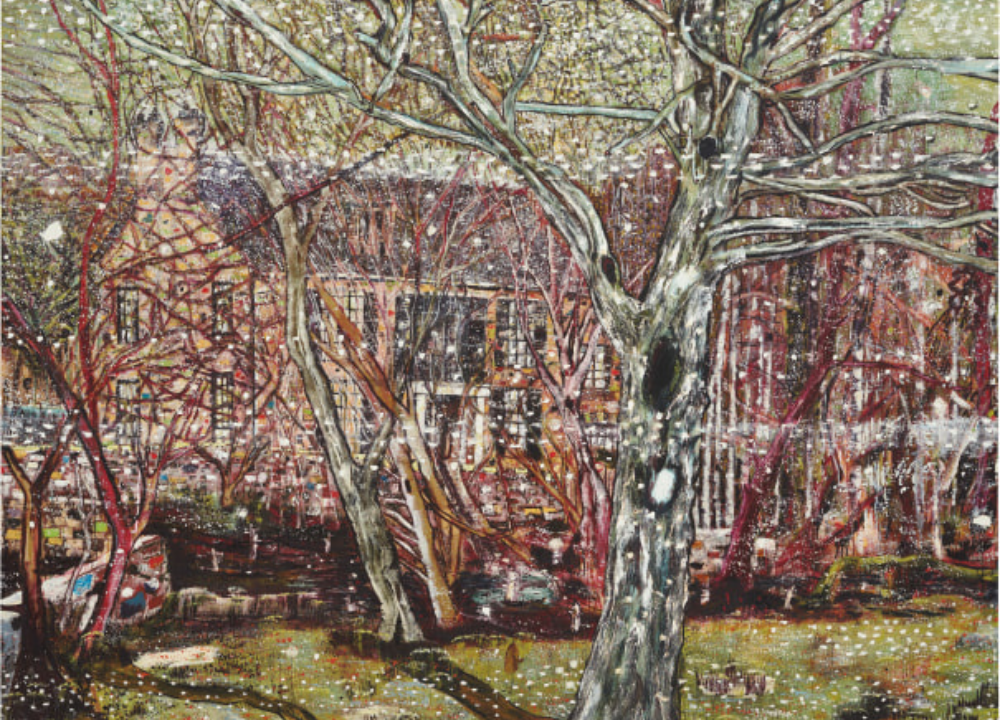Are you curious about the artists who are reshaping the art world right now? “Modern Masters: Exploring the Icons of Contemporary Art” takes you into the vibrant realm of contemporary creativity.
From bold colors to innovative techniques, these artists challenge traditional norms and invite you to see the world through their eyes. You’ll discover the stories behind their most famous works and what makes them resonate today. Whether you’re an art lover or just looking to understand more about this dynamic field, this exploration will inspire and intrigue you.
By the end, you’ll have a deeper appreciation for the icons who are not just creating art but are also shaping cultural conversations. Ready to dive in? Let’s uncover the magic of modern masters together!
The Rise Of Contemporary Art
The world of art has changed a lot in recent years. Modern Masters: Exploring the Icons of Contemporary Art looks at this shift. The rise of contemporary art has brought new voices and fresh ideas. Artists today challenge old rules. They use different media and techniques. This new wave of creativity is exciting and important.
The Evolution Of Art Movements
Art has always been a reflection of society. Over time, various movements shaped the art world:
- Impressionism
- Expressionism
- Surrealism
- Abstract Expressionism
- Pop Art
Each movement brought unique styles and perspectives. Contemporary art builds on these foundations. It blends styles and breaks boundaries.
Technology’s Impact On Art
Technology plays a huge role in modern art. Artists use digital tools to create. This includes:
- Digital painting
- 3D modeling
- Virtual reality
These tools allow for new experiences. Art is now more accessible than ever. People can view works online. They can even create art on their devices.
Diversity In Contemporary Art
Today’s art scene is diverse. Artists come from many backgrounds and cultures. This variety enriches the art world. It introduces new ideas and stories. Some key aspects include:
- Gender equality in art
- Representation of different cultures
- Focus on social issues
Contemporary artists often address themes like identity and climate change. Their work invites conversation and reflection.
The Role Of Galleries And Museums
Galleries and museums support contemporary artists. They showcase new works and ideas. Many now feature:
- Interactive exhibits
- Community events
- Virtual tours
This approach helps engage a wider audience. People of all ages can connect with art.
The Future Of Contemporary Art
What lies ahead for contemporary art? Trends show a focus on sustainability. Artists are becoming more aware of their impact. Many are using eco-friendly materials. This shift is crucial for future generations. Art will continue to evolve. It will adapt to new challenges and ideas.
Key Figures In Modern Art
Modern art has a rich history filled with influential figures. These artists shaped how we see and understand art today. They broke rules, explored new ideas, and inspired others. The key figures in modern art are not just artists; they are pioneers and innovators. They opened doors to new styles and techniques, making lasting impacts on the art world.
Pioneers Of Change
Pioneers of change are artists who challenged traditional boundaries. They introduced new concepts and forms, reshaping the art landscape. Their work reflects deep social and political messages. Here are some of the most significant pioneers:
- Pablo Picasso: Known for co-founding the Cubist movement. His works, like “Les Demoiselles d’Avignon,” changed perspectives in art.
- Henri Matisse: A leader in Fauvism. His bold colors and expressive forms shocked the art community.
- Marcel Duchamp: Challenged ideas about what art is. His piece “Fountain” turned a urinal into art.
These artists paved the way for future movements. They encouraged others to think differently about art. Here is a table summarizing their contributions:
| Artist | Movement | Notable Work |
|---|---|---|
| Pablo Picasso | Cubism | Les Demoiselles d’Avignon |
| Henri Matisse | Fauvism | The Joy of Life |
| Marcel Duchamp | Dada | Fountain |
Innovators Of Technique
Innovators of technique transformed how art is created. They explored new materials and methods. This creativity led to unique styles and expressions. Some key innovators include:
- Jackson Pollock: Known for his drip painting technique. He changed how we view the act of painting.
- Andy Warhol: Famous for his use of silkscreen printing. His pop art challenged commercial culture.
- Georgia O’Keeffe: Used large-scale flowers and landscapes. Her style emphasized color and form.
These artists focused on the process of making art. They encouraged viewers to see art differently. Here is a summary table of their techniques:
| Artist | Technique | Notable Work |
|---|---|---|
| Jackson Pollock | Drip Painting | No. 5, 1948 |
| Andy Warhol | Silkscreen Printing | Campbell’s Soup Cans |
| Georgia O’Keeffe | Large-Scale Painting | Black Iris III |
Notable Art Movements
Modern art has seen many shifts and changes over the years. Each art movement brings its own voice and vision. These movements shape how we view and understand art today. Exploring these notable art movements reveals the essence of contemporary art. Each movement has unique characteristics and notable artists that stand out.
Abstract Expressionism
Abstract Expressionism emerged in the 1940s and 1950s. It focuses on expressing emotions through abstract forms. Artists aimed to convey their feelings rather than depict reality. This movement has notable figures like Jackson Pollock and Mark Rothko.
Key features of Abstract Expressionism include:
- Spontaneity and improvisation
- Large canvases
- Bold colors and dynamic brushwork
Abstract Expressionism is often divided into two main styles:
| Style | Characteristics |
|---|---|
| Action Painting | Focus on the act of painting itself; energetic brush strokes |
| Color Field Painting | Use of large areas of color to evoke emotion |
This movement changed how artists express themselves. It opened doors for future generations.
Pop Art
Pop Art began in the 1950s and challenged traditional art. It drew inspiration from popular culture, mass media, and consumerism. Artists like Andy Warhol and Roy Lichtenstein made this movement famous.
Key features of Pop Art include:
- Bright colors and bold imagery
- Use of commercial techniques like screen printing
- Incorporation of everyday objects and advertisements
Pop Art often reflects society’s values and trends. It questions what is considered “high” or “low” art. This movement made art accessible to everyone.
Minimalism
Minimalism arose in the late 1950s as a reaction against Abstract Expressionism. It focuses on simplicity and clarity. Artists sought to reduce art to its essential elements. Donald Judd and Agnes Martin are key figures in this movement.
Characteristics of Minimalism include:
- Simple geometric shapes
- Limited color palette
- Focus on materials and form
Minimalist art often creates a calm and meditative experience. It invites viewers to engage with the artwork in a new way. This movement emphasizes the idea that less is more.
Street Art
Street Art has roots in graffiti and urban culture. It emerged in the late 20th century. Artists use public spaces to express ideas and emotions. Banksy and Shepard Fairey are famous street artists.
Key aspects of Street Art include:
- Social and political messages
- Use of vibrant colors and bold designs
- Engagement with the community
Street Art challenges the boundaries of art. It brings art into everyday life. This movement has gained recognition in galleries and museums, highlighting its importance in contemporary culture.
Influential Contemporary Artists
Modern Masters: Exploring the Icons of Contemporary Art highlights influential contemporary artists who reshape our understanding of art today. These artists challenge norms and provoke thought through their unique styles and messages. Their work reflects society, culture, and personal experiences. Here, we explore four artists who have made significant impacts in the art world.
Yayoi Kusama
Yayoi Kusama is a Japanese artist known for her bold colors and repetitive patterns. Her signature polka dots cover everything from paintings to large installations. Kusama’s work often reflects her struggles with mental health, using art as a form of therapy. Her immersive installations invite viewers to experience infinity and self-reflection.
Key features of her work include:
- Infinity Rooms: These rooms create a sense of endlessness.
- Dot Motif: Dots symbolize her personal experiences and obsessions.
- Public Installations: Kusama often transforms public spaces with her art.
Kusama’s impact is profound. Her work has gained global attention and has been showcased in major museums worldwide. She inspires a new generation of artists and collectors.
Banksy
Banksy is a well-known street artist from the UK. His identity remains a mystery, adding to his allure. Banksy’s art often contains social and political messages. He uses humor and irony to address serious issues like war, poverty, and consumerism. His distinctive style blends graffiti with stenciled images.
Notable aspects of Banksy’s work include:
- Social Commentary: His art critiques society and government policies.
- Iconic Images: Pieces like “Girl with Balloon” and “The Flower Thrower” are famous.
- Street Art: Banksy’s work appears in public spaces, making art accessible.
Banksy’s influence on contemporary art is immense. He challenges viewers to think critically about their surroundings and the world.
Damien Hirst
Damien Hirst is a leading figure in the Young British Artists movement. His work often explores themes of life and death. Hirst is famous for his use of unconventional materials, like animals preserved in formaldehyde. His pieces provoke discussion about mortality and the value of art.
Key elements of Hirst’s work include:
- The Physical Impossibility of Death in the Mind of Someone Living: This iconic piece features a shark in a tank.
- Spot Paintings: These colorful canvases represent the relationship between art and commerce.
- Pharmaceutical Themes: Hirst often uses medicine and science as motifs.
Hirst’s art raises important questions about existence and the role of art in society. His controversial methods keep him at the forefront of contemporary discussions.
Jeff Koons
Jeff Koons is an American artist known for his large-scale sculptures and bright, shiny surfaces. He often uses familiar objects to explore themes of consumerism and popular culture. Koons’ work blurs the lines between high art and commercialism. His pieces invite viewers to enjoy the playful side of art.
Notable aspects of Koons’ work include:
- Balloons: His balloon animals are playful yet complex.
- Challenging Norms: Koons challenges traditional ideas of what art can be.
- Mass Production: His work often involves collaboration with skilled artisans.
Koons’ art sparks joy and provokes thought. He reflects modern society’s obsession with imagery and consumer goods.
The Role Of Technology
Modern art changes with time. Artists use new tools to express their ideas. Technology plays a big part in this change. It helps artists explore new ways to create and share their work. This section looks at how technology, especially digital art and virtual reality, shapes modern art. It opens doors to creativity and connects artists with audiences in unique ways.
Digital Art
Digital art is a powerful form of expression. It uses computers and software to create images, animations, and even interactive experiences. Many artists embrace digital tools for their flexibility and accessibility.
Some key features of digital art include:
- Easy Editing: Artists can change their work easily and quickly.
- Wide Range of Tools: Software offers brushes, colors, and effects.
- Accessibility: Artists can create from anywhere with a computer or tablet.
Digital art takes many forms:
| Form | Description |
|---|---|
| Illustration | Digital drawings for books, magazines, and online media. |
| Animation | Moving images created using software. |
| 3D Modeling | Creating three-dimensional objects for games and films. |
Digital art is not just a trend. It has a significant place in galleries and museums. Many exhibitions showcase digital works. Artists can reach a global audience through social media and online platforms. This makes art more inclusive and diverse.
Virtual Reality In Art
Virtual reality (VR) takes art to a new level. It immerses viewers in a three-dimensional space. This technology allows people to experience art in ways never seen before. Artists create entire worlds for viewers to explore.
Benefits of virtual reality in art include:
- Immersive Experience: Viewers feel as if they are part of the artwork.
- Interactive Elements: Users can touch, move, and change aspects of the art.
- New Perspectives: Art can be viewed from different angles and distances.
Some notable examples of VR in art:
- Art installations that transform spaces into digital environments.
- Interactive galleries where visitors create their own art using VR tools.
- Experiences that combine storytelling with visual art in a virtual space.
Virtual reality challenges traditional views of art. It allows artists to think outside the box. This technology invites audiences to engage with art actively. The future of art is exciting with these tools.




